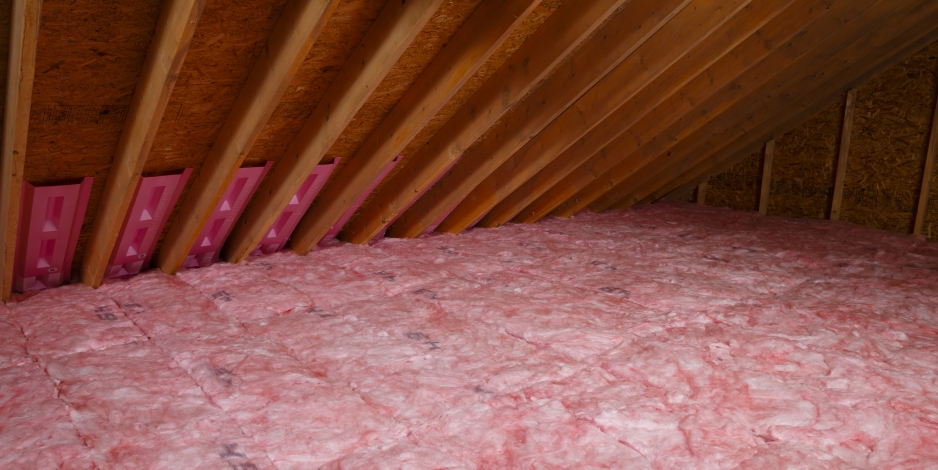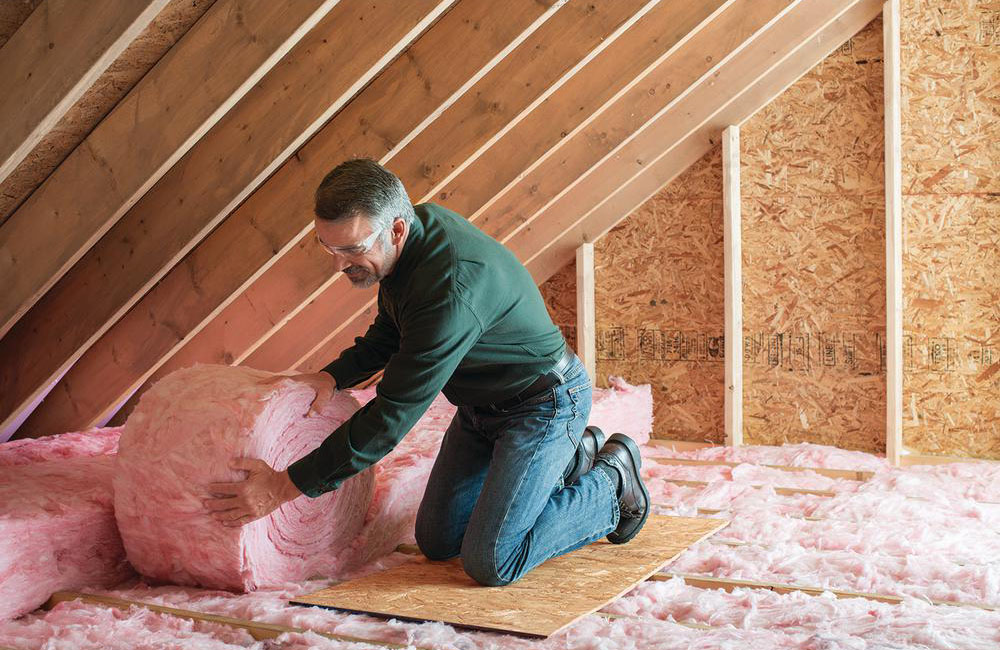Discover the Various Kinds Of Attic Insulation and Their One-of-a-kind Benefits for Your Home's Energy Performance

Fiberglass Insulation
Fiberglass insulation is among the most commonly used materials for attic room insulation as a result of its excellent thermal performance and cost-effectiveness. Composed of tiny glass fibers, this product effectively traps air, creating a shielding barrier that assists keep consistent interior temperatures. Its high R-value per inch makes it particularly effective at withstanding heat transfer, which is critical for energy conservation in homes.
Installment of fiberglass insulation is fairly simple, typically offered in batts or loose-fill kinds, suiting numerous attic arrangements. In addition, it is resistant and non-combustible to dampness, lowering the danger of mold growth. This durability contributes to its long life, making fiberglass a sensible lasting financial investment for house owners.
In addition, fiberglass insulation is often made from recycled materials, which boosts its eco-friendliness. The material can also add to soundproofing, lessening sound transfer between rooms. While it is necessary to use protective gear during installment to prevent irritation from the fibers, the overall advantages of fiberglass insulation, consisting of energy cost savings and environmental considerations, make it a popular selection for improving attic room performance and promoting a comfortable living setting.
Spray Foam Insulation
Spray foam insulation is a very effective option for attic room insulation, known for its remarkable air sealing and thermal performance. This cutting-edge insulation product is made up of a mixture of isocyanate and polyol resin, which, when integrated, expands swiftly to fill voids and cavities in the attic room. Its capacity to follow different surface areas ensures a continual obstacle versus air leaks, substantially reducing heat loss during chillier months and warm gain throughout warmer periods.
Among the key advantages of spray foam insulation is its high R-value per inch, which means it provides excellent thermal resistance in a relatively thin application. This is especially beneficial in attic rooms where area is usually minimal. Additionally, spray foam can assist minimize moisture buildup, decreasing the danger of mold and mildew and mildew development, which can be destructive to both the structure and indoor air high quality.
While the initial expense of spray foam insulation may be greater than conventional alternatives, its long-term energy savings, paired with increased comfort and boosted home value, make it a rewarding financial investment for homeowners looking for boosted energy effectiveness. Attic Insulation DFW. Generally, spray foam insulation stands apart as an efficient solution for maximizing attic room insulation
Cellulose Insulation

Cellulose insulation is a preferred choice for attic insulation, largely made up of recycled paper items treated with fire retardants. This ecologically pleasant alternative is understood for its excellent thermal efficiency, properly lowering warm transfer in both summer and wintertime months. The dense make-up of cellulose permits it to fill up voids and voids in attic room spaces, providing a seamless barrier versus air leakages.
One of the substantial advantages of cellulose insulation is its capability to resist mold and bugs, owing to the fire retardant therapies used during production. Additionally, it flaunts a high R-value per inch, which converts right into remarkable energy performance. Homeowners can expect lower cooling and heating costs as an outcome of enhanced insulation.
Installation is typically accomplished through blowing loose cellulose into the wanted location, enabling a quick and effective process. This technique likewise decreases interruption to the existing framework. Cellulose insulation has a relatively reduced ecological influence, as its production procedure utilizes recycled products, contributing to sustainable structure methods.
Rock Wool Insulation
Among the different choices for attic room insulation, rock woollen, additionally referred to as mineral woollen, attracts attention due to its impressive thermal and acoustic efficiency. Made from recycled or natural products, great post to read rock woollen is developed by melting rock and rotating it right into fibers, resulting in a product that supplies exceptional insulation residential properties.
Among the substantial advantages of rock wool insulation is its high R-value, which indicates its performance in resisting warm flow. This particular not just improves power performance but likewise adds to maintaining a comfortable indoor temperature year-round. Additionally, rock wool is naturally fire-resistant, making it a much safer alternative for homes as it can stand up to high temperatures without melting or launching poisonous fumes.
In addition, rock woollen insulation succeeds in soundproofing capacities, effectively decreasing noise transmission between rooms and from outdoors sources. On the whole, rock woollen insulation offers a detailed remedy for enhancing energy effectiveness, safety, and convenience in property settings.
Radiant Barrier Insulation
Glowing obstacle insulation functions as an efficient option for decreasing warmth transfer in attic rooms, specifically in warmer climates. This sort of insulation jobs by reflecting glowing warmth away from living rooms, thus lowering the amount of warm that enters a home during heat - Attic Insulation DFW. Generally composed of a very reflective product, such as light weight aluminum foil, radiant barriers are mounted in attic rooms, encountering the roofing, where they can intercept inbound heat from the sun
The key benefit of radiant Home Page barrier insulation is its capacity to reduced air conditioning costs. By showing warmth instead than absorbing it, glowing obstacles can assist preserve a much more secure interior temperature, reducing the workload on cooling systems. This performance translates into lower power bills and raised comfort for homeowners.
Along with power savings, radiant barriers can additionally add to improved indoor air high quality. By lowering warmth buildup, they assist reduce humidity degrees, which can protect against mold and mildew development and boost overall air circulation. When installed correctly, glowing obstacle insulation can be an important enhancement to any energy-efficient home, making it a deserving factor to consider for home owners looking to improve their attic room insulation method.
Final Thought
To conclude, comprehending the numerous kinds of attic insulation-- fiberglass, spray foam, cellulose, rock woollen, and glowing barriers-- allows homeowners to make informed decisions regarding energy performance. Each insulation type provides distinct advantages, such as remarkable thermal resistance, moisture monitoring, and audio attenuation. By selecting the appropriate insulation product, considerable decreases in energy prices can be attained, in addition to enhancements in indoor comfort. Inevitably, the best option adds to a more sustainable living atmosphere and advertises general power conservation.

In final thought, understanding the different types of attic insulation-- fiberglass, spray foam, cellulose, rock woollen, and glowing obstacles-- allows homeowners to make enlightened decisions concerning power performance.